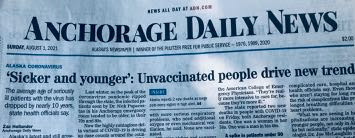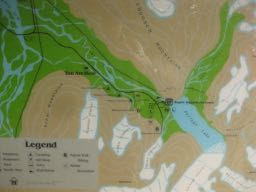Let's start off with some good news. If you're only going to link to one of these articles, I recommend this one. There are better ways to do things. For one things, being smaller and close to your people helps. I also want to disclose that the head of Fledge is a close relative.
Novel Holding Company Africa Eats Has Raised $1.8M For Its Impact Startups (Forbes)
About a year ago, Fledge, which operates about 10 impact accelerators around the world, launched Africa Eats, a holding company with 27 agriculture and food-focused Africa-based graduates of the networks’ programs. The goal: supporting entrepreneurs on-the-ground with an intimate understanding of how best to address hunger and poverty in Sub-Saharan Africa. Since then, the company has raised close to $2 million—and, despite the pandemic, the portfolio companies are doing fine.
Another good news story, where calling attention to labels can make a difference. Not 'at risk.' 'At promise.' Most kids want to be good people, they just need support for those dreams.
Caring for the environment helps South King County kids recovering from trauma or hardship find a sense of purpose (From the Seattle Times)
"This summer, Park, Amine and Tracy are among two dozen mostly South King County youth learning to be stewards of the environment.
They clean urban lakes during kayak patrols, plant trees, learn field mapping skills and test water quality in streams and rivers on state parks and public lands. They’re on water or trails several days each month. They’re paid $15 an hour for the work — enough to keep most of them from having to take other part- or full-time jobs that would otherwise consume their days — and they’re getting leadership training so they can help lead conservation and pollution prevention efforts in the future. . .
Many of the youth involved in Unleash the Brilliance have faced early adverse experiences “on steroids,” says Dorsey. Amine was peer pressured into regularly using drugs in middle school; his grades and relationship with his parents tanked. Park’s family faced bankruptcy. Other youth bore witness to their parents’ addictions, moved around a lot or lived in extreme poverty. Some have a history of being incarcerated, skipping class or facing delays graduating from high school.
Dorsey sees them for their potential. Don’t call them “at-risk.” They’re “at-promise,” he says."
How much do your peers impact your behavior? This Atlantic article addresess peer pressure and vaccination.
"Something very strange has been happening in Missouri: A hospital in the state, Ozarks Healthcare, had to create a “private setting” for patients afraid of being seen getting vaccinated against COVID-19. In a video produced by the hospital, the physician Priscilla Frase says, “Several people come in to get vaccinated who have tried to sort of disguise their appearance and even went so far as to say, ‘Please, please, please don’t let anybody know that I got this vaccine.’” Although they want to protect themselves from the coronavirus and its variants, these patients are desperate to ensure that their vaccine-skeptical friends and family never find out what they have done. . .
Shifting from an individual to a relational perspective helps us understand why people are seeking vaccination in disguise. They want to save face within the very specific set of social ties that sociologists call “reference groups”—the neighborhoods, churches, workplaces, and friendship networks that help people obtain the income, information, companionship, mutual aid, and other resources they need to live. The price of access to those resources is conformity to group norms. That’s why nobody strives for the good opinion of everyone; most people primarily seek the approval of people in their own reference groups."
Do you know whether your insurance company is insuring coal companies?
U.S. INSURERS FAIL ON CLIMATE ACTION: Global insurers make coal increasingly “uninsurable”; whole industry fails to act on oil & gas
LONDON (December 2, 2020)—U.S. insurance companies lag behind their global peers and play a key role in enabling the fossil fuel industry, the Insure Our Future campaign revealed today in its fourth annual scorecard on insurers’ climate policies.
Insuring Our Future: The 2020 Scorecard on Insurance, Fossil Fuels and Climate Change finds that most European and Australian insurers no longer provide coverage for new coal projects, which has made it harder and costlier to secure the insurance that coal projects need to operate. Coal companies face rate increases of up to 40%. Controversial projects—like the Adani Group’s Carmichael coal mine in Australia—are finding it hard to obtain insurance at all. This demonstrates the insurance industry’s unique power to accelerate the shift away from fossil fuels.
More useful for most folks is the scorecard here.
Unfortunately, smaller companies like All State and State Farm aren't listed here. They are both independent companies. But Geico is owned by Berkshire Hathaway which is one of the worst offenders.











































